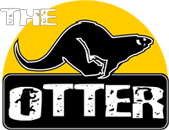Ryan Hodierne (sports scientist & training consultant) will help you with your preparation for the 2015 OTTER African Trail Run
A training program to run the Otter Trail should consist of three aspects all of which will help to make
the Trail easier, more enjoyable and (should you be that way inclined) faster:
| 1. | Base level Endurance – this is your distance running. The Otter trail is a little more than marathon distance so at the very least you should be able to run a marathon. Specific to this event a lot of your base training should be done on the trails and not on the road. |
| 2. | Stairs – there is a great number of stairs and step-ups on the Otter so being strong in this discipline will help you a LOT! |
| 3. | Interval training – This, for some, is the most difficult part of training but, if done correctly, can offer the most benefits. |
The training program is aimed to both the Otter trail Runners and Challengers for one main reason…… It is ALWAYS
better to be well prepared for an event of this nature.
Guidelines:
| you have the option of following the RUN or CHALLENGE training plan, each follows the same format but differs in training consistency & load. | |
| the given Otter Trail training plans will include 6 x 4 week build cycles toward the event date | |
| each plan is set on a 4 week cycle, where loads build to week 3 to include an active recovery 4th week | |
| every 4 week cycle will build progressively until the 5th cycle, to include a taper (decrease in training load) in cycle 6 in preparation for the event | |
| training loads given are designed to start off lightly, assuming fitness level is low and to then progressively build as the weeks go by the first 2 x 4 week build cycles will be immediately available, where the progressive 3rd, 4th, 5th and 6th – 4 week build cycles wi ll be updated accordingly | |
| each training plan is designed to provide Otter Trail specific guidelines to trail run training | |
| these plans are structured for the novice to intermediate trail runner with a low to moderate fitness level | |
| the structure of the Intermediate RUN plan may be used as a training guideline to the more elite | |
| the training plans are specific to running training, but do provide sessions for alternative sports ie. etc. MTB / swimming / paddling | |
| within the right most column, options are given for potential events to do in preparation within training | |
| the training plans can be used as a structured guideline for your training where your own discretion is required on training plan selection and training load |
The OTTER on movescount – download your moves and share your training with fellow competitors!
Download your Training Plan here:
Otter 2015 training plans CHALLENGE 1
Otter |
Build Cycle
|
Build Cycle
|
Build Cycle
|
Challenge
Run
|
|
|
|
Primary differences between the training plans:
The two training plans are similar in format and layout however; taking a closer look you’ll notice they have a few key differences.
The RUN plan includes longer weekly durations, +/- 30min – 1 hour more each training day, mounting up to between 3 – 5hrs more each week as apposed to the CHALLENGE plan. The longer durations will take there toll if you are not used to spending that amount of time on foot.
The CHALLENGE plan caters more to the need of an individual who hasn’t got the time in the day and who enjoys other activities at his/her own discretion, to make up for the duration indicated. It also caters better to the road runner crossing over to trail, as more of the sessions are on the road.
Thus, the RUN plan is a little more specific to the trail runner looking to compete and or set a personal best along the route. The sessions within the RUN plan also include a few more bouts on the trail. It is focused more specifically to the seasoned trail runner.
The RUN plan also includes a day or sometimes 2 days extra a week, especially through the heavier loading weeks. More provision is made for x-training in the form of core / body weight exercises within the RUN plan, as well as a few extra and more intense interval sessions here and there. These interval sessions aren’t as important as getting consistency and duration on the feet for the individual looking to only complete the otter.

